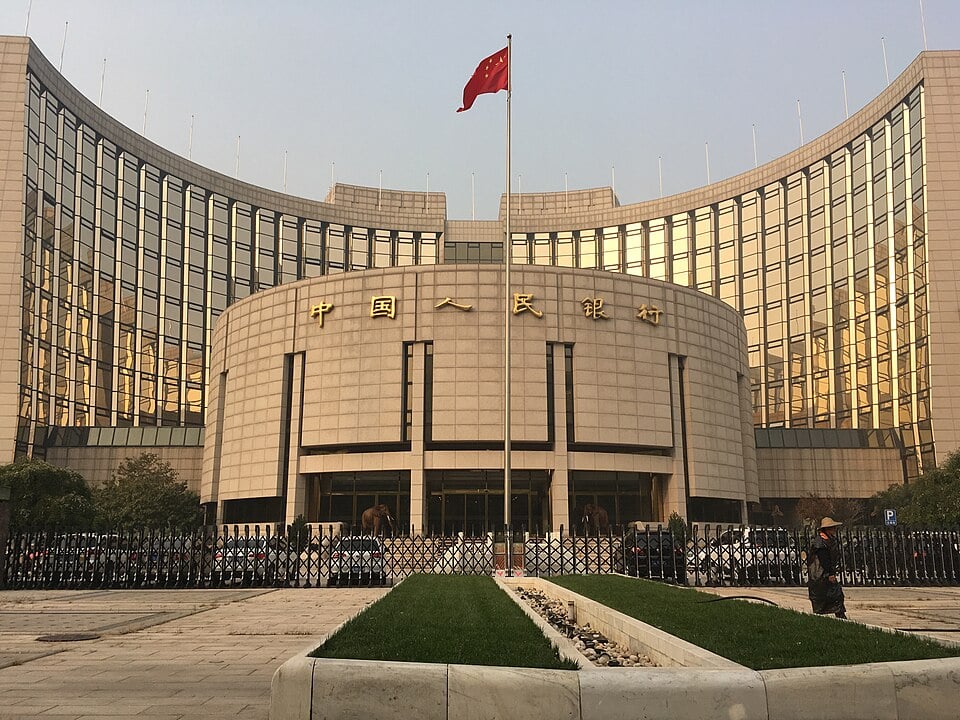
- China’s central bank has introduced a broad set of stimulus measures to support the economy.
- Key actions include cutting the main policy interest rate and reducing the reserve requirement ratio (RRR) for banks.
- 1 trillion yuan ($142 billion) is expected to be freed up for lending through the RRR cut.
- Mortgage rates are being reduced, with down payments on second homes lowered to 15%.
- The real estate sector is a major focus, with new funds allocated to address unsold homes and unfinished projects.
- A 500 billion yuan fund has been introduced to support share buybacks and stabilize the stock market.
- Economists are skeptical whether these measures alone will be enough to meet the 5% growth target for 2024.
- Consumer confidence and spending remain low, and the property market continues to drag on overall growth.
- Analysts warn that more fiscal support may be necessary to ensure a sustainable recovery.
China’s central bank has launched a significant series of measures aimed at reviving the country’s struggling economy. The People’s Bank of China (PBOC) unveiled cuts to key interest rates and reserve requirements in an effort to combat a deepening economic slump. The move comes as the nation grapples with a prolonged property crisis, low consumer confidence, and deflationary pressures.
The PBOC cut its benchmark seven-day reverse repo rate by 0.2 percentage points to 1.5%. The reserve requirement ratio (RRR), which determines how much cash banks must hold in reserve, was reduced by 50 basis points, expected to free up 1 trillion yuan ($142 billion) in liquidity. These actions signal Beijing’s growing concern over the state of the economy, which has shown signs of missing the government’s 5% growth target for the year.
Focus on Property Market and Stock Market
China’s property sector, long a key pillar of the economy, continues to struggle under the weight of debt and unsold homes. To address this, the PBOC also announced cuts to mortgage rates and lower down-payment requirements, which now stand at 15% for second homes, down from 25%. This is intended to support both buyers and developers, with the government committing to further support measures if needed.
Additionally, the PBOC introduced a 500 billion yuan ($70 billion) fund to finance share buybacks and help stabilize the stock market. In response, the CSI 300 index, which tracks Shanghai and Shenzhen-listed shares, saw a 4.3% increase, while Hong Kong’s Hang Seng index jumped by 3.9%.
Challenges Persist Despite Stimulus
Despite the broad package of monetary measures, it’s easy to remain skeptical about its ability to drive sustained growth. The real estate crisis, which has wiped out an estimated $18 trillion in household wealth, continues to weigh on the broader economy. In addition, consumer spending remains weak as households remain cautious about the future, and there is still limited appetite for borrowing, even with lower interest rates.
Economists have also called for bolder fiscal policies, such as increased government spending on infrastructure, to complement the monetary actions taken by the central bank.
Global Context and Outlook
China’s actions come at a time when central banks around the world, including the U.S. Federal Reserve, have also been cutting interest rates. This global easing trend has given China more room to maneuver without risking a sharp devaluation of its currency.
However, some analysts warn that Beijing’s reluctance to unleash a “bazooka” of stimulus akin to its 2008 response to the global financial crisis may limit the impact of the current measures. Without significant fiscal support or a rapid recovery in the property market, China may continue to struggle with low growth for the foreseeable future.
Opinion: Will China’s Stimulus Be Enough?
The latest stimulus package from the PBOC is a clear indication that China’s leadership understands the gravity of the current economic situation. Yet, while these measures may provide a short-term boost to liquidity and market confidence, they are unlikely to solve the deeper issues plaguing the economy.
The property market, which has been the backbone of China’s growth for decades, is in a precarious position. Lowering mortgage rates and easing purchase requirements may help some, but it won’t rebuild the wealth that has evaporated due to years of overbuilding and unsold inventory. Unless more aggressive steps are taken—such as a comprehensive restructuring of the housing market or a major fiscal stimulus to boost domestic demand—China’s economy may remain stuck in its current malaise.
What’s clear is that the PBOC’s actions are a step in the right direction. But as many economists have noted, the road to recovery will require more than just monetary easing. It will take coordinated fiscal action, a resolution to the housing crisis, and a meaningful recovery in consumer confidence. Until these issues are addressed, the effectiveness of China’s stimulus will likely remain limited.
